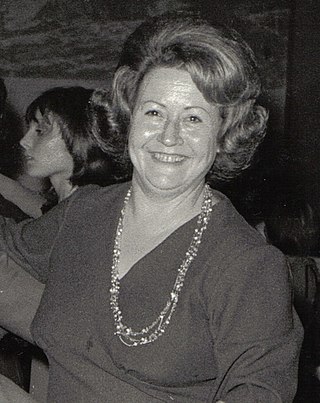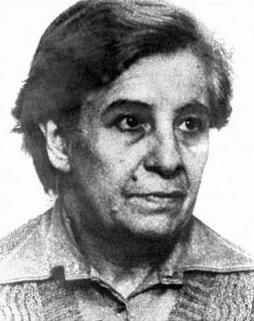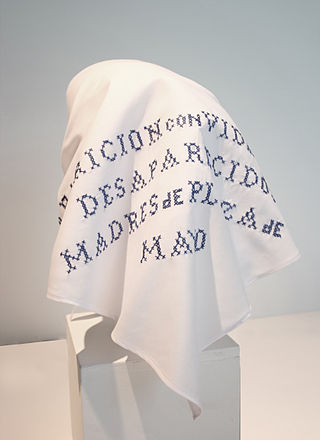
The Mothers of Plaza de Mayo is an Argentine human rights association formed in response to the National Reorganization Process, the military dictatorship by Jorge Rafael Videla, with the goal of finding the desaparecidos, initially, and then determining the culprits of crimes against humanity to promote their trial and sentencing.

Rosario is the largest city in the central Argentine province of Santa Fe. The city, located 300 km (186 mi) northwest of Buenos Aires on the west bank of the Paraná River, This city is the third-most populous city in the country after Buenos Aires and Cordoba. With a growing and important metropolitan area, Greater Rosario has an estimated population of 1,750,000 as of 2020. One of its main attractions includes the neoclassical, Art Nouveau, and Art Deco architecture that has been preserved in hundreds of residences, houses and public buildings. The city is also famous for being the birthplace of the legendary Argentine footballer Lionel Messi.

Hebe María Pastor de Bonafini was an Argentine activist who was one of the founders of the Association of the Mothers of the Plaza de Mayo, an organization of Argentine mothers whose children disappeared during the National Reorganization Process military dictatorship.

Rosario is the largest city of the province of Santa Fe, Argentina, and the third most populous in the country, after Córdoba and Buenos Aires. It is located about 300 km (190 mi) north of Buenos Aires, on the Western shore of the Paraná River, and it has about 910,000 inhabitants. It is surrounded by smaller cities and towns that form a metropolitan area with a population of about 1.2 million according to the 2001 census [INDEC].

Azucena Villaflor was an Argentine activist and one of the founders of the Mothers of the Plaza de Mayo, a human rights organisation which looks for the victims of enforced disappearances during Argentina's Dirty War.
Susana Blaustein Muñoz is an Argentine film director. She directed four films since she started her career in 1980. She also produced one of those films, the documentary The Mothers of Plaza de Mayo (1985), with co-director Lourdes Portillo, about the Mothers of the Plaza de Mayo who looked for their disappeared children during the Dirty War. This film was nominated for an Academy Award for Best Documentary Feature. Her last film was 1993's Mi casa, mi prisión.

Alicia Domon was one of two French nuns in Argentina to be "disappeared" in December 1977 by the military dictatorship of the National Reorganization Process. She was among a dozen people associated with the Mothers of the Plaza de Mayo, a human rights group, who were kidnapped and taken to the secret detention center at ESMA.

Plaza 25 de Mayo is a plaza in Rosario, province of Santa Fe, Argentina. It is Rosario's civic center, and the core of the original settlement. Its name alludes to the date of the May Revolution, which led to the establishment of the first local Argentine government in Buenos Aires. Before 1852, when this name was adopted, it was simply called Plaza Principal.
Ángela Auad was an Argentine social activist. A member of the Marxist–Leninist Communist Party, she worked with the Mothers of the Plaza de Mayo to locate victims of forced disappearance during the Dirty War. Because of her activism, she was kidnapped, tortured and murdered.
Alicia Zubasnabar de De la Cuadra, also known as "Licha", was an Argentine human rights activist. She was one of the twelve founding members of the Grandmothers of the Plaza de Mayo and served as the first President of the organization. She has been named as a "prominent woman" by the Argentine National Congress and as an "illustrious citizen" by Corrientes Province.

Esther Ballestrino de Careaga was a Paraguayan biochemist and political activist. She is most notable for her connection to the future Pope Francis and her forced disappearance in Argentina by the military dictatorship of the National Reorganization Process (1976–1983). She had helped found Mothers of the Plaza de Mayo, which organised protests by the mothers of missing children taken by the authorities.

Adelina Ethel Dematti de Alaye was an Argentine human rights activist who co-founded the Mothers of the Plaza de Mayo, an organization of mothers whose children disappeared during the Dirty War of the 1970s and early 1980s. She became known as "la madre fotógrafa," or "the mother photographer," for her documentation of the Argentine dictatorship and the Mothers of the Plaza de Mayo through her photography. Her collection was later declared a "Memory of the World" by UNESCO. In addition to her work with the Mothers of the Plaza de Mayo, Dematti was also active within the Permanent Assembly for Human Rights (APDH).

María Eugenia Ponce de Bianco was an Argentine social activist. She was one of the founders of the Mothers of the Plaza de Mayo, an organization which searched for desaparecidos. She was kidnapped, tortured, and murdered as a result of her involvement with the group.

Beatriz H. C. Aicardi de Neuhaus was an Argentine human rights activist, and one of the twelve founders of the Grandmothers Association of Plaza de Mayo.

Celina Kofman was an Argentine human rights activist. By profession, Celina Kofman was one of the important members of the organization that was launched in the 1970s in the midst of the National Reorganization Process, after her son was kidnapped. He was a member from 1978 to 2000, where he had responsibility for the former Concordia and Santa Fe subsidiaries.

Adela "Lila" Panelo de Forestello was an Argentine human rights activist and retired mathematics teacher. Forestello was a founding member of the Mothers of the Plaza 25 de Mayo, based in Rosario, Santa Fe Province. She joined with other women in Rosario to establish the Mothers of the Plaza 25 de Mayo following the forced disappearance of their children during the Dirty War and military dictatorship from 1976 to 1983. Her daughter, Marta María "Lala" Forestello, was kidnapped on August 19, 1977, and remains missing to this day.

Nora Irma Morales de Cortiñas, better known as Nora "Norita" Cortiñas, was an Argentine social psychologist and human rights activist. She was a co-founder of Mothers of Plaza de Mayo and later of Madres de Plaza de Mayo Línea Fundadora.

Eduardo Héctor Garat Cabanillas was an Argentine lawyer and notary and a Montoneros militant.
María Esther Biscayart de Tello was an Argentine human rights defender and member of Madres de Plaza de Mayo Línea Fundadora. Originally a teacher by occupation, in the 1950s she joined the anarchist movement and had three children. During the Dirty War, the family was affiliated with Resistencia Libertaria and Biscayart's children were forcibly disappeared by the military dictatorship of the National Reorganization Process. Biscayart then joined the country's human rights movement and advocated for the prosecution of those responsible for crimes against humanity.















